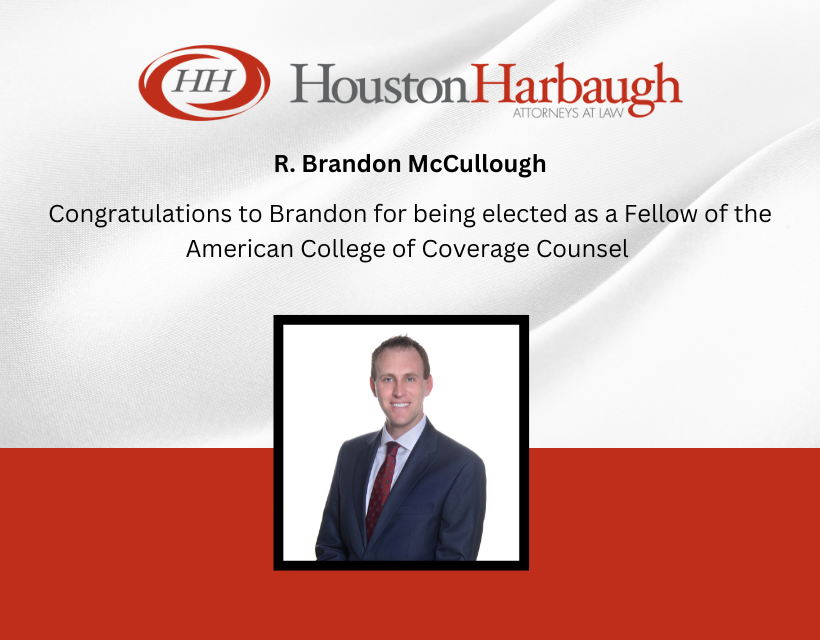PA Federal Business Decisions Volume 14, No. 4
Court Looks to Intellectual Property Subject Matter of License Agreement for Impact Upon the Duration of the Agreement
In NOVA Chemicals, Inc. v. Sekisui Plastics Co., LTD, No. 08-4090, 2009 U.S. App. LEXIS 19340 (3d Cir. 2009), the appellee licensee, NOVA Chemicals, Inc. (“NOVA”) filed a declaratory judgment action requesting the district court to determine that it did not violate the license agreement with licensor, Sekisui Plastics Co., LTD. (“Sekisui”), by selling the licensed products in specific Asian countries once it believed the license had terminated. Upon licensee’s motion for summary judgment, the court granted judgment in favor of the licensee, NOVA, finding that there was no reasonable interpretation of the licensee agreement that resulted in continuing obligations to the licensor, Sekisui. On appeal, the Third Circuit reviewed and affirmed.
In 1983, ARCO Chemical Company (“ARCO”), the predecessor to NOVA, entered into an agreement to license from Sekisui its Styrofoam product called Piocelan. The license agreement granted ARCO an exclusive license during a three year period to use Sekisui’s trade secret and patent rights to manufacture the Piocelan products and sell them in the United States and Canada. In exchange for the three year period and initial license, ARCO agreed to pay two lump sum payments. The license agreement also provided that during the three year period, ARCO had the option to acquire a ten-year license under Sekisui’s intellectual property rights to produce, use and sell Piocelan anywhere in the world with the exception of certain Asian countries. In exchange, ARCO would agree to make a lump sum payment and pay royalties during the ten year period of the license. In 1985, ARCO decided to opt for the ten-year license agreement, and in 1996, more than 10 years later, NOVA acquired ARCO. Six years after its acquisition, NOVA began selling the Piocelan products in the Asian countries excluded under the license agreement. Sekisui objected, and NOVA brought the declaratory judgment action. The parties’ argument centered upon the “Term and Termination” provision (“Article XI”) of the license agreement, which provided in pertinent part:
This Agreement shall…remain in full force and effect for a period of ten (10) years from the date of exercise by [ARCO] of the option. Upon payment of the Lump Sum Payment and Running Royalties, ARCO shall have a fully paid-up right and license to use and sublicense [the Piocelan process and Piocelan products] in any of its United States and/or Canadian plants and to sell [Piocelan products] produced anywhere in the world.
Sekisui argued that the license agreement granted two separate licenses to use the Piocelan process: (i) the ten-year license to produce, use and sell Piocelan anywhere in the world except for Asia; and (ii) the “fully paid-up” license included in Article XI, which provided for the continuation of full rights only after ten years of royalty payments. NOVA, however, argued that the “fully paid-up” language in Article XI granted only one license that existed as long as it continued to make royalty payments throughout the ten-year term.
In its decision, the Third Circuit provided a brief review of contract interpretation under Pennsylvania law. The court explained that for Pennsylvania courts, the paramount goal of contract interpretation is to determine the intent of the parties. It further explained that when the language of a contract is clear and unambiguous, the court focuses upon the terms of the agreement that are manifestly expressed, as opposed to the silent terms intended by the parties. However, if the contract language is ambiguous, the court may consider extrinsic or parol evidence to determine the intent. Under Pennsylvania case law, contractual terms are ambiguous if they are subject to more than one reasonable interpretation.
Upon review of Article XI of the license agreement, the court found that there was considerable linguistic and structural support for the two separate and reasonable interpretations alleged by both parties. The court determined that the agreement was ambiguous, but that it was not necessary to resolve the ambiguity because even if the “fully paid-up” license was a separate license extending beyond the ten-year term of the license agreement, the license itself expired along with Sekisui’s intellectual property rights in the Piocelan process.
In determining when the license terminated, the court held that the license agreement did not explicitly provide the duration of the license and that under Pennsylvania law, the intention of the parties had to therefore be determined from surrounding circumstances and construction of the agreement as a whole. To do so, the court reviewed the subject matter of the agreement, which involved Sekisui’s patents and trade secrets. The court determined that Sekisui’s patents had expired. However, the license agreement also contained trade secret rights, which are unlimited in duration as long as the information remained undisclosed. Factors used in determining whether certain information is a trade secret are: the extent to which employees within the business know the secret; the number of individuals outside the business that know the secret; the extent the information is protected; the value of the information to competitors; the effort or money expended to develop the information; and the ease or difficulty with which the information could be acquired or duplicated.
Based upon the evidence before it, the court was not able to determine whether the trade secret still existed. Even though Sekisui shared its confidential information with NOVA, the court found that the trade secret was not necessarily terminated because trade secret licenses are agreements where the trade secret holder retains ownership. The court found that if the licensee is bound by contract to continue to make use of the information, the trade secret license may continue even where the trade secret itself was destroyed by disclosure. This is based upon the reasoning that because trade secrets last for an indefinite amount of time, the one who acquires the secret does so at the risk of disclosure. However, the court held that under the terms of the agreement, NOVA was not required to maintain the secrecy of the information beyond the terms of the license, which was inconsistent with the notion of trade secrets. The court therefore found that the subject matter itself did not dictate the duration of the license. Therefore, because the terms of the license agreement did not suggest that it continued to exist after the termination of Sekisui’s intellectual property rights, and there was no evidence to support the same, the court affirmed the district court’s grant of summary judgment in favor of NOVA.
Fraud on the Market Theory Held Not Applicable to Common Law Fraud Claims
In Aubrey v. Sanders, No. 08-4351, 2009 U.S. App. LEXIS 21221 (3d Cir. Sept. 24, 2009), the Third Circuit held that while the fraud on the market theory of liability applies to violations of the Securities Exchange Act of 1934 (“Securities Act”), it does not apply to common law fraud claims. This decision is not precedential under Third Circuit Internal Operating Procedure Rule 5.7 and thus is not binding precedent. Nevertheless, the ruling indicates the position of three judges from the Circuit on this issue and is consistent with prior Third Circuit precedent as will be explained below.
In Aubrey, the plaintiff was an investor in a company called Sunrise Technologies International, Inc. (“Sunrise”). Aubrey accused the defendants of concealing negative research results so that Sunrise could obtain approval from the Food and Drug Administration (“FDA”) for an ophthalmologic laser, thereby fraudulently luring him to invest in Sunrise. The complaint alleged common law fraud and civil conspiracy under Pennsylvania law. Aubrey claimed that one individual defendant manipulated the results of clinical trials and made misleading statements regarding the laser in articles and press releases. Aubrey accused the other individual defendant of misrepresenting the results of clinical trials and the potential for FDA approval to induce individuals to purchase stock in Sunrise. Aubrey did not have any evidence that he directly relied upon any statement by defendants. He instead premised his case upon the fraud on the market theory. This theory provides that a plaintiff states a prima facie case if misleading statements would defraud purchasers of stock even if the purchasers did not directly rely on the misstatements. The rational is that the misstatements may have affected the price of the stock and thus, defrauded purchasers who rely on the price as an indication of the stock’s value.
The parties moved for summary judgment and the trial court ruled in favor of defendants on the ground that plaintiff could not premise his claims upon a fraud on the market theory of liability. Aubrey appealed to the Third Circuit.
In an older case, Peil v. Speiser, 806 F.2d 1154, 1160-61 (3d Cir. 1986), the Third Circuit expressly refused to extend and apply the fraud on the market theory of liability to common law fraud, ruling that direct reliance remained a requirement of a common law securities fraud claim. It held that the fraud on the market theory of liability is only good law with respect to the Securities Act. Aubrey asked the Third Circuit to reconsider its ruling in Peil in light of the U.S. Supreme Court’s decision in Basic Inc. v. Levinson, 485 U.S. 224, 248-49, 108 S. Ct. 978 (1988), where the Supreme Court endorsed the fraud on the market theory in a securities fraud case premised on a violation of section 10(b) of the Securities Exchange Act of 1934.
In Aubrey, the Third Circuit acknowledged that several federal district courts predicted that Pennsylvania courts would adopt a fraud on the market theory for common law securities claims, based upon Basic Inc. v. Levinson. However, the Aubrey Court did not find these district court opinions to be persuasive because: (1) the Supreme Court in Basic observed that Rule 10b-5 actions are distinct from common law deceit and misrepresentation claims and are in part designed to add to the protections provided to investors by the common law; (2) despite the predictions of the courts cited by Aubrey, Pennsylvania has not recognized a fraud on the market theory of liability in common law fraud claims in the 20 years since Basic; and (3) the cases cited by Aubrey were distinguishable because unlike the plaintiffs in those cases, Aubrey did not sue Sunrise, the company in which he invested, or its officers or directors.
–Contributed by Kelly A. Williams, Esq., Houston Harbaugh, Pittsburgh; kwilliams@psmn.com
Parties Fail to Establish Clear Record Supporting Breach of Contract Claims
Judge Gibson of the Western District recently denied cross-motions for summary judgment in Association of the United States Army v. Aegis Consulting Group, Inc., No. 03-cv-206, 2009 U.S. Dist. LEXIS 91567, at *1 (W.D. Pa. Sept. 30, 2009). Plaintiff AUSA and Defendant Aegis both alleged that the other party breached a binding contract, in which Aegis promised to publish four books about military history using manuscripts that AUSA promised to provide. AUSA alleged that Aegis failed to publish manuscripts that it submitted; Aegis claimed that those manuscripts were not the sort contemplated by the parties. Judge Gibson found that neither of the two agreements that the parties signed, nor their extensive correspondence, specified which four books Aegis was to publish or provided an objective standard for selecting such books. Accordingly, Judge Gibson found that the parties had “nothing more than an agreement to agree as to the books to be published,” and he denied cross-motions for breach of contract for that reason. Both parties had also pleaded non-contract claims, and Judge Gibson denied summary judgment on those claims as well, on the basis that “the proper resolution of such claims will likely flow directly from the conclusions of the Court and the jury as to the contract-based claims.”
In the course of delivering his opinion, Judge Gibson suggested that the parties spent too much energy on attaching “nearly innumerable documents” as exhibits, and not enough energy on “carefully selecting the relevant pages of such documents” or on “addressing a threshold issue in this matter: the precise nature and legal effect of the parties’ agreement.” Judge Gibson suggested that this approach was unhelpful because “in matters of interpreting vague contracts, this Court is neither willing nor able to pore over thousands of pages of emails in search of evidence that might provide support for one position over another.” He encouraged the parties to narrow the issues in pre-trial briefing and suggested that doing so might allow him to dismiss one or more of the parties’ live claims at that time.
–Contributed by Jason A. Spak, Esq., Houston Harbaugh, Pittsburgh; jspak@psmn.com
Copyright Holder Awarded Summary Judgment on Infringement Claims Based upon Unauthorized Use of Sound Recordings
UMG Recordings, Inc. v. Alburger, Civil No. 07-3705, 2009 U.S. Dist. LEXIS 91585 (E.D. Pa. Sept. 30, 2009) (opinion by J. Rufe), involves claims of copyright infringement as a result of the improper downloading of music files via the internet.
The plaintiffs were entities that owned or licensed exclusive rights to copyrighted sound recordings. The defendant was an individual who downloaded music from a website that permitted file sharing. The plaintiffs alleged that defendant Alburger was illegally distributing 563 digital audio files, but they only pursued violations for 25 registered sound recordings.
The plaintiffs filed a motion for summary judgment to which Alburger failed to reply. The court nevertheless examined the record to determine if plaintiffs were entitled to summary judgment because, in the Third Circuit, the courts agree that a lack of response alone is not sufficient to award the moving party summary judgment.
The facts in the case were essentially undisputed. The plaintiffs used a third-party service to detect possible copyright violations, particularly with respect to online file sharing programs. This service detected an internet user distributing 563 music files through an account on a peer-to-peer (“P2P”) network called KaZaA. The user had an account through KaZaA and others who signed onto KaZaA could view and download the files from the user’s “shared” folder. The plaintiffs were able to identify defendant through an Internet Protocol (“IP”) address. Although defendant denied many of the allegations in plaintiffs’ complaint, he eventually admitted to downloading the music and using KaZaA on his home computer.
To prevail on their claims, plaintiffs had to establish that they owned a valid copyright in the recordings and that defendant engaged in unauthorized copying of original elements of those recordings. In particular, plaintiffs alleged that defendant infringed upon the rights identified in 17 U.S.C. § 106(1) and (3), the rights of reproduction and distribution.
The court explained that the district courts in the Third Circuit (and elsewhere) agree, in the absence of clear precedent from the U.S. Supreme Court or the Third Circuit, that downloading music from the Internet, without paying for it or acquiring any rights to it, is a direct violation of the Copyright Act. Additionally, an individual violates the act by making available that illegally downloaded work to other Internet users. This prohibition extends to uploading one’s own CDs and making them available to others online without permission of the copyright holder. It is not a defense that the infringement was innocent.
Based on defendant’s admissions and plaintiffs’ proof of valid copyrights in the recordings, the court found copyright infringement and awarded summary judgment in plaintiffs’ favor. Again, defendant admitted that he downloaded the music, had the KaZaA account at issue and was the individual linked to the IP address at issue. While he contended that he was unaware that the recordings did not come from the KaZaA software itself, he acknowledged the recordings at issue were among the songs he had downloaded. He even recognized the existence of the “shared” folder which was available to other KaZaA users.
With respect to damages, plaintiffs elected to collect statutory damages pursuant to 17 U.S.C. § 504(c). Accordingly, plaintiffs did not have to provide evidence of actual damages. The permissible range of damages per violation, per sound recording in this case, was $750 to $30,000, and plaintiffs chose the minimum amount, for a total award of $18,750. The plaintiffs also requested the costs of the suit as permitted under 17 U.S.C § 505. This is a matter within the discretion of the court, and the Third Circuit does not require bad faith for such an award. The court granted the request because plaintiffs only requested $420 in costs, did not request attorneys’ fees and the amount seemed appropriate to act as further deterrence for copyright violators. The court also granted plaintiffs’ motion for permanent injunctive relief to prevent defendant from further violating their exclusive rights to the recordings or any other copyrighted works, even though defendant agreed to cease downloading and file sharing. The court found that the injunction would ensure that defendant would not be inclined to resume any of his prior illegal activities.
–Contributed by Kelly A. Williams, Esq., Houston Harbaugh, Pittsburgh; kwilliams@psmn.com
Motion for Judgment on the Pleadings Granted in Part on Claims Preempted by the Copyright Act
In The Scranton Times, L.P. v. Wilkes-Barre Publishing Company d/b/a The Times Leader, No. 3:08-cv-3125, 2009 U.S. Dist. LEXIS 87261 (M.D. Pa. 2009) (opinion by Caputo, J.), the plaintiffs, the Scranton Times, LP and the Times Partner, LLC, published a newspaper in Scranton, Pennsylvania, and the defendant, Wilkes-Barre Publishing Company, published a newspaper in Wilkes-Barre, Pennsylvania. The defendant began publishing a version of its newspaper in Scranton (the “Scranton Edition”), and the plaintiffs subsequently filed suit in the Court of Common Pleas of Lackawanna County, Pennsylvania, alleging that the Scranton Edition contained obituaries that were copied from the plaintiffs’ newspapers and/or websites. The plaintiffs asserted claims on the legal theories of misappropriation, unfair competition, conversion, fraud, breach of contract, tortious interference with existing business relations, and unjust enrichment. The defendant removed the action to the Middle District, and once the pleadings were closed, filed a motion for judgment on the pleadings on the grounds that (1) the plaintiffs lacked standing to sue, (2) the plaintiffs’ claims were preempted by the Copyright Act of 1976, and (3) the plaintiffs could not assert a claim under the Copyright Act.
With respect to standing to sue, the court determined whether the plaintiffs showed an injury in fact, causation fairly traceable to the defendant’s alleged conduct, and a substantial likelihood that the plaintiffs’ requested relief would remedy the alleged injury in fact. In both its answer to the complaint and brief, the defendant asserted that it had obtained the obituaries from Legacy.com, which had separate agreements with both the plaintiffs and the defendant, wherein the rights, title and interest in the obituaries were assigned to Legacy.com and that the Terms of Use Agreement with Legacy.com granted all newspapers under such an agreement a license to publish any and all material provided by Legacy.com. The defendant claimed that, as a result of the agreement, Legacy.com was the sole owner of all right, title and interest in the death notices, including the right to sue. However, the court, in viewing the facts alleged and all inferences drawn in a light most favorable to the plaintiffs, concluded that the plaintiffs satisfied the first two prongs above by alleging that they expended time, money and resources in compiling the obituaries and that the activities caused a loss of customers and sales, damage to their existing business relations and a loss of profit and good will. Finally, the court determined that the plaintiffs satisfied the third prong of the standing inquiry by seeking relief in the form of injunctive relief, money damages and attorneys’ fees, all of which would provide a sufficient remedy to the alleged injuries sustained by the plaintiffs.
As part of its preemption argument, the defendant asserted that judgment on the pleadings was proper because the plaintiffs’ claims were preempted by the Copyright Act of 1976, which, under 17 U.S.C. § 301(a), eliminated the dual state and federal copyright systems and preempted state copyright laws. According to the “general scope” test, if an extra element is required instead of or in addition to the acts of reproduction, performance, distribution or display, in order to constitute a state-created cause of action, then the right does not lie within the general scope of copyright, and there is no preemption. The court applied the general scope test and examined the plaintiffs’ state law claims to determine whether the claims contained an extra element thereby rendering the claims qualitatively different from a copyright infringement claim under the Copyright Act.
With respect to the plaintiffs’ misappropriation claim, the court compared various federal court decisions that examined the state causes of action that would be preempted by the amended Copyright Act. The Third Circuit Court of Appeals noted that courts have agreed generally that some form of misappropriation claim survives preemption, and the Second Circuit Court of Appeals identified the extra elements that would allow a narrow misappropriation claim to survive preemption: (i) the time-sensitive value of factual information, (ii) the free-riding by a defendant, and (iii) the threat to the very existence of the product or service provided by the plaintiff. In regard to the first extra element, the court determined that the obituaries conveyed time-sensitive information, and thus, the subject matter of the underlying material satisfied the first “time sensitive” extra element. Moreover, the court concluded that the plaintiffs’ allegations that the defendant copied the death notices found in the plaintiffs’ newspaper into its own newspaper satisfied the second “free-riding” extra element because the allegations, if proven, would demonstrate that the defendant did not incur any costs yet enjoyed the benefit of the plaintiffs’ work. Finally, however, the court found that the defendant’s alleged re-use of the obituaries did not pose a threat to the existence of the plaintiffs’ publications or to the plaintiffs’ ability to continue to publish the information in a timely manner since the plaintiffs failed to allege that the defendant’s activities threatened the plaintiffs’ ability to provide the service of collecting and distributing obituaries to their customers. Thus, the court held that the plaintiffs’ misappropriation claim did not contain any extra elements from a claim of copyright infringement, and thus, was preempted by the Copyright Act.
In reviewing the plaintiffs’ unfair competition claim, the court distinguished the conduct of “passing off” and “reverse passing off” and concluded that the Copyright Act preempts unfair competition claims alleging “reverse passing off” but not unfair competition claims alleging “passing off.” According to the court, “reverse passing off” occurs when a producer misrepresents another’s goods or services as his own; “passing off” occurs when a producer misrepresents his goods or services as another’s goods or services. In the present case, the court held that the plaintiffs’ allegations that the defendant copied obituaries contained in the plaintiffs’ publications and distributed the obituaries as its own work constituted “reverse passing off,” and thus, the unfair competition claim was preempted by the Copyright Act. Similarly, with respect to the plaintiffs’ tortious interference with existing business relations claim and unjust enrichment claim, the court ruled that the claims were preempted based on the plaintiffs’ allegations that the defendant copied and distributed the plaintiffs’ work product.
With respect to the plaintiffs’ conversion claim, fraud claim and breach of contract claim, the court compared the elements required for the plaintiffs to prove such claims with the elements required to bring the claims under the Copyright Act and held that the claims were not preempted by the Copyright Act.
In conclusion, the court entered judgment on the pleadings in favor of the defendant on the claims of misappropriation, unfair competition, tortious interference with existing business relations and unjust enrichment for being preempted by the Copyright Act and on the claim of fraud because the plaintiffs failed to allege sufficient facts to support a claim for fraud. The court denied judgment on the pleadings for the defendant on the claims of conversion and breach of contract.
–Contributed by Houston Harbaugh, Pittsburgh;
Claims for Breach of Contract and Warranty Withstand Motion to Dismiss Based on Third-Party Beneficiary Theory
In American Stores Properties, Inc. v. Spotts, Stevens & McCoy, Inc., 2009 U.S. Dist. LEXIS 71216 (E.D. Pa. Aug. 13, 2009) (opinion by Slomsky, J.), the plaintiff, American Stores Properties, Inc. (ASPI), filed suit arising from the alleged failure and distress of three retaining walls at its food distribution center in Denver, Pennsylvania. In the amended complaint, ASPI named twelve parties that were involved in the construction of the retaining walls, including CBL Service Corporation f/k/a Lenders Support Group, Inc. (CBL).
The distribution center required gabion retaining walls for part of its foundation. CBL had been retained by the general contractor, High Associates, Ltd. (High), to perform subsurface explorations and make design recommendations concerning the retaining walls. CBL and High executed a written contract setting forth their agreement, and, pursuant to the contract, CBL authored a report addressing the subsurface conditions and suggesting an appropriate design for the retaining walls.
Five gabion retaining walls were ultimately constructed at the distribution center. However, APSI alleged that three of the five retaining walls showed signs of distress that required repair or replacement to prevent failure. APSI sought recovery from CBL on three bases. First, APSI asserted a breach of contract claim in which it maintained that CBL had breached its contract with High. APSI alleged that it was entitled to recover thereunder because it was an intended third-party beneficiary. Second, APSI contended that CBL had breached warranties that it had made in its contract with High and that were included in its report. Finally, APSI asserted a cause of action for negligence in the performance of the site investigation and in making its design recommendations. CBL moved to dismiss all of the claims against it under Rule 12(b)(6) for failure to state a claim upon which relief can be granted.
As to the breach of contract claim, CBL argued that there was no privity of contract and that the complaint did not show that APSI was an intended third-party beneficiary of CBL’s agreement with High. APSI countered that it had sufficiently alleged its status as an intended third-party beneficiary. The court observed that, under Pennsylvania law, a party can establish its status as an intended third-party beneficiary in three ways: (1) both parties to the contract expressing the third-party’s status as an intended beneficiary in the contract itself; (2) the circumstances being so compelling that the beneficiary’s right is appropriate to effectuate the parties’ intention and the performance satisfies an obligation of the promise to pay money to the beneficiary; or (3) the circumstances being so compelling that the beneficiary’s right is appropriate to effectuate the parties’ intention and circumstances indicate that the promisee intends to give the beneficiary the benefit of the promised performance.
In this instance, the court observed that APSI’s complaint did not allege either of the first two circumstances. However, the court noted that APSI’s allegations were sufficient to create the inference that the circumstances were sufficiently compelling that recognition of APSI as a third-party beneficiary would satisfy the parties’ intentions and that High intended to benefit APSI by entering into the agreement with CBL. As such, the court denied CBL’s motion to dismiss the breach of contract claim.
Regarding the breach of warranty claims, APSI likewise maintained that it was entitled to enforce the alleged express warranties in the contract between CBL and High and in CBL’s report because it was an intended third-party beneficiary. The court recognized that third parties may only enforce express warranties where (1) the party issuing the warranty intends to extend the specific terms of the warranty to the third party and (2) the third party is aware of the specific terms of the warranty and the identity of the party issuing the warranty.
Because the amended complaint alleged that CBL breached warranties contained within its contract with High and that the warranties were made for APSI’s benefit, the court concluded that the breach of warranty claim under the agreement with High satisfied the pleading requirements and denied the motion to dismiss. Notably, although presented with a motion to dismiss, the court observed that CBL had not presented any evidence to refute the APSI’s claims that the warranties were made for APSI’s benefit. However, the court dismissed APSI’s claim that CBL breached warranties contained within its report on subsurface conditions since the report expressly disclaimed any intent to extend the warranties to any third party.
Finally, CBL argued that APSI’s negligent design claim should be dismissed under the gist of the action and economic loss doctrines. The court agreed and dismissed APSI’s negligence action, as it found that the claims against CBL sounded in contract rather than tort. In so doing, the court reiterated and applied the gist of the action doctrine, which precludes plaintiffs from recasting ordinary breach of contract claims as tort claims. The court explained that “the important difference between contract and tort actions is that the latter lie from breach of duties imposed as a matter of social policy while the former lie for the breach of duties imposed by mutual consensus.” Because CBL’s duties arose out of the alleged contractual obligations owed to APSI, APSI could not convert those same allegations into a negligence claim. Further, the court concluded that the economic loss doctrine would likewise justify the dismissal of APSI’s negligence claims.








